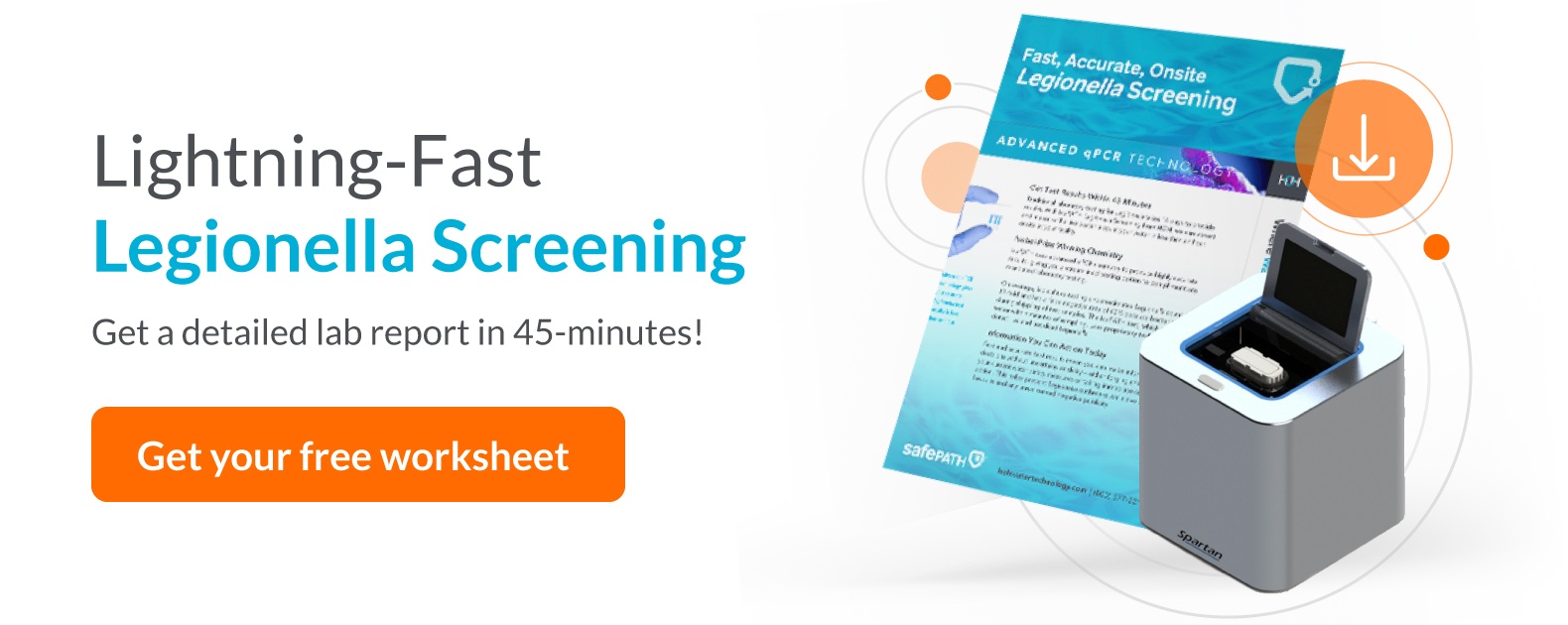
 The weather is warming up, and cooling season is almost here. As a building manager, you already know that even a minuscule amount of Legionella bacteria is too much. According to the Centers for Disease Control and Prevention, there is no safe level of Legionella when it comes to industrial water cooling systems. Even very small amounts can grow and lead to a Legionella outbreak and cause Legionnaire’s disease.
The weather is warming up, and cooling season is almost here. As a building manager, you already know that even a minuscule amount of Legionella bacteria is too much. According to the Centers for Disease Control and Prevention, there is no safe level of Legionella when it comes to industrial water cooling systems. Even very small amounts can grow and lead to a Legionella outbreak and cause Legionnaire’s disease.
Here are 8 things you can do right to prevent Legionella growth in your water cooling systems.
- Get your team together and form an industrial water management team.
This template can help you figure out who should be on your team and what they need to do. Legionella prevention is a group effort that often requires the time and expertise of many different people.
- Create an industrial water management plan and a Legionella prevention plan.
Remember that your program should be regularly reviewed and updated, especially when there is a change in your building, your water systems, or in the municipal water system. - Conduct routine sampling.
If you want to be proactive about preventing Legionella, you need to get samples of your water regularly. Your samples will do one of two things: they will tell you that your water management program is working, or they will tell you that you need to take action now. The samples should include details about when and where they were collected, and should be recorded in a spreadsheet or document that allows you to track your variables over time. - Pay close attention to disinfectant levels.
Proper disinfecting is key to controlling Legionella. But don’t assume that because you set them up correctly, that they will continue to be within safe limits without any modifications. Disinfectant levels need to be monitored regularly because they can be affected by filters, storing, and heating mechanisms, among other things. - Be relentless in the fight against scale, slime, and biofilm.
Any kind of buildup or slime in your pipes or water systems provides a comfortable home for Legionella to stay protected from your disinfectants or heating mechanisms. A good way to help prevent their appearance is to use and maintain all of your building’s water fixtures and equipment regularly. If you find scale or biofilm, clean it out immediately. Then, test your water for Legionella and review your operating, cleaning, and disinfecting procedures. - Keep water heaters hot.
Legionella prefers temperatures between 77 and 108 degrees Fahrenheit. Ideally, water heaters should keep water hotter than this for better protection against Legionella. But what about scalding regulations? You can often avoid scalding by using a system that pushes cold water into the system near the point of use. This means the hot water pipes remain at the higher temperatures right until the very end, greatly reducing your risk of Legionella and avoiding dangerously hot water at the same time. - Visually inspect cooling towers frequently.
Cooling towers are one of the biggest offenders so you’ll need to regularly check the deck, tower fill, and mist mechanisms for any signs of scale, slime, or biofilm buildup. Most cooling towers also require a complete washout and cleaning twice a year or more. Follow your local health department’s guidelines on the frequency of inspection and cleaning. - Avoid stagnant water.
Stagnation allows biofilm to collect, and invites Legionella and other bacteria into your water systems. Areas of the building that are closed off or are temporarily not in use often have stagnation. If Legionella is allowed to infiltrate a stagnant area, it can easily spread throughout your entire water system. You may be able to prevent stagnation with some simple steps like daily flushing of all of the fixtures in the unoccupied area. You may also need to conduct daily testing of the water to check disinfectant levels.
Even with an effective water management program, your team will need to stay focused on preventing Legionella. Your water management plan should be regularly reviewed and updated. In addition, if you manage a healthcare facility, be sure you are well-versed in the CMS regulations for Legionella in healthcare facilities. This page on the CDC website contains detailed information about healthcare water management programs.
Want to get more information about preventing Legionella in your buildings? Check out the CDC Water Management Program Toolkit and browse the HOH Water Technology website.
Recent Blog Posts

Five Ways to Increase the Efficiency of Your Closed Loop System

Global 6K for Water

